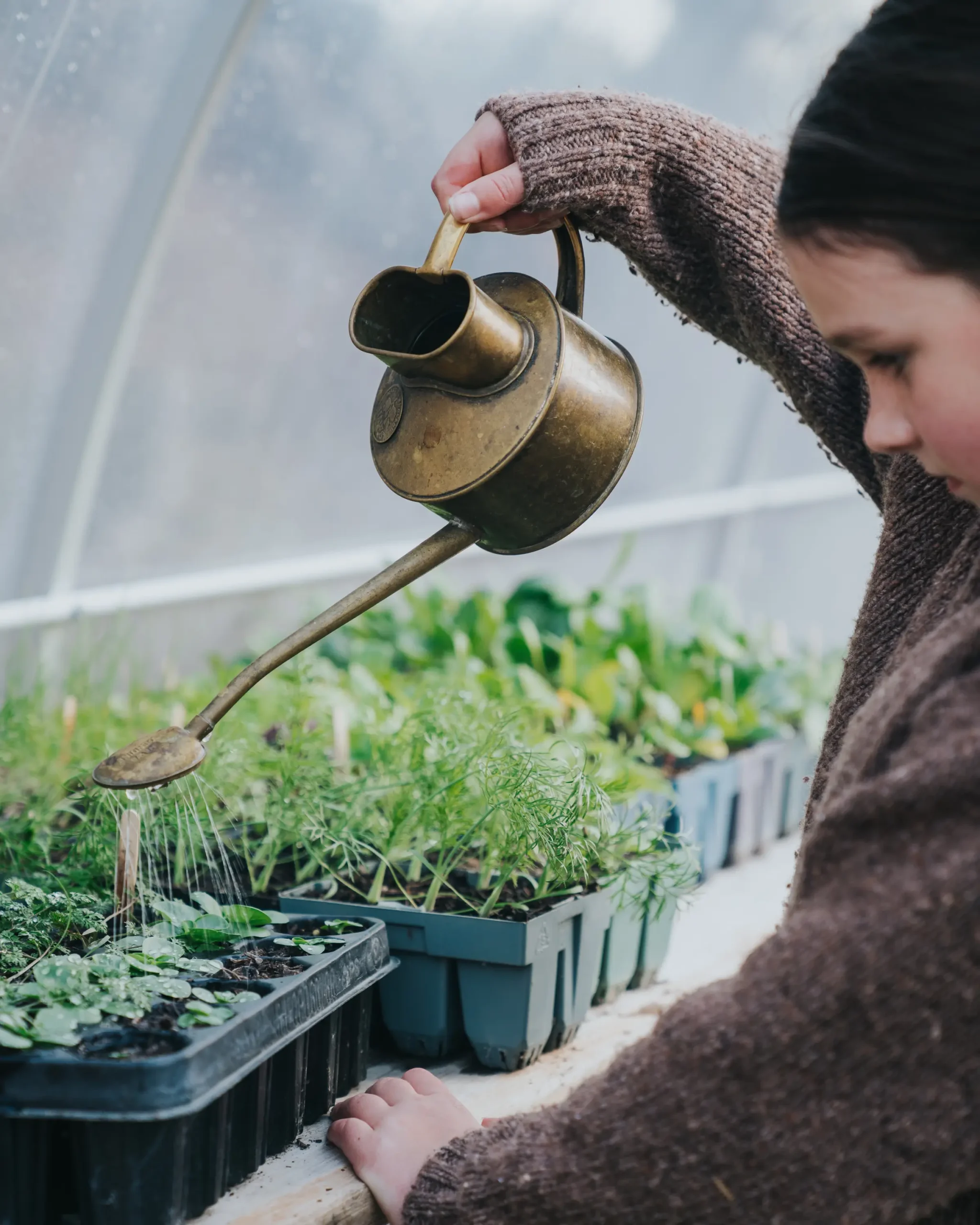
Water Management- Guide to watering your Greenhouse
March 10, 2025
Best Guide to Effective Water Management for Your Greenhouse
Managing the Moisture
Late summer is a critical period for managing moisture in the tunnelhouse. In many parts of the country, tunnelhouse summer crops are still producing strongly, while for some growers, February is the main month for harvesting. Whatever situation you are in, when and how you water the tunnelhouse can either extend or end the life of your plants and their bounty. With that in mind, let’s take a look at how you can use water to please the plants you want to perform.
Soil moisture test
In late summer, tunnelhouse fruit is filling out and ripening, and the main job of your plants is to provide their fruit with moisture. To help them pump moisture from the soil and into that fruit, roots must remain damp but never waterlogged. Before you even think about watering, check the moisture level of your soil by pushing your finger into the tunnelhouse bed to the depth of your second knuckle. If your finger comes out clean, it’s time to water. If your finger comes out with soil clinging to it, leave the watering until later.
Down deep
When you water your tunnelhouse soil, always water deeply. Your aim is to wet the soil around, but also beyond, the depth of the roots. As the heat of the day evaporates the moisture from the upper layers of the soil, moisture at a deeper level will be wicked up and become available to the roots when they most need it. A cursory splash of water from a watering can, or the ‘once over’ with a garden hose is not enough to water deeply. If you don’t have irrigation in your tunnelhouse, be patient, and hold the watering can or hose at the base of the plant for as long as necessary.
Even approach
The even-ness of watering is important if you want to avoid fruit splitting. If you allow the tunnelhouse bed to dry out completely, the skin of fruit will become leathery. When you next water the beds deeply, the thirsty plants will suck up the moisture and deliver it to the fruit which is then likely to split as it attempts to expand to take it in. Uneven watering is also a cause of blossom-end rot. Blossom-end rot is not so much a disease, as a condition. It is caused when access to water is reduced, preventing the uptake of calcium from the soil (adding calcium to the soil at this stage, even when you do resume even-watering, is unlikely to help). Both splitting and blossom-end rot can be managed when you water evenly i.e. before the soil dries out completely, and with not so much moisture that the soil becomes water logged.
Aim low!
If you’re not careful, water can cause as much harm as it does good. That’s because excess moisture on foliage and stems encourages fungal disease to set up home on your tunnelhouse plants. It is preferable to have irrigation at ground level, but if this isn’t possible, always water around the base of the plants, never from above.
Be an early bird
Always water early in the day. If you do this, the warmth of the tunnelhouse, as it heats up, will evaporate any moisture that may have spilled onto lower leaves. By opening as many vents as available, you will also encourage moisture vapour to escape as quickly as possible from the tunnelhouse so that humidity (another contributor to fungal disease) doesn’t build up.
Work away
After watering the tunnelhouse bed, your plants’ stems and foliage will become heavier and more succulent as they draw up moisture from the soil. Their fruit will also be fuller and heavier. This means that both plants and fruit are more easily damaged if you brush past them. For this reason, ensure that plants have adequate support before watering. And try to avoid working in the tunnelhouse in the 24 hours after watering.
Potassium please!
Many tunnelhouse gardeners feed their plants with liquid nutrients. This is especially wise in late summer because the plants are nearing the end of their lives and time is running out for solid fertilisers to break down and be taken up. However, in late summer, there is little point in feeding nitrogen-heavy fertilisers that will only promote the growth of foliage. Instead, feed your plants a liquid dose of potassium. Potassium helps with the development of plant cell growth and, more importantly, encourages the uptake of water and disease resistance. Organic sources of potassium can be found in kelp, which readily breaks down after being soaked in water for a week. Keep a container of soaking kelp on hand, dilute it with fresh water until it is the colour of weak tea, and deliver it to the base of your plants at the same time as you water the beds.
Water sounds innocuous. However, if you ignore the rules of tunnelhouse watering, you risk losing the harvest you (and your plants) have worked so hard to produce. Avoid missing a watering by using watering-reminders such as your phone alarm. If weather conditions are erratic, keep an even more watchful eye on soil conditions in the tunnelhouse (which can change at an almost hourly rate in very hot water). If you are going to be away from home for a period of more than a few days, consider automatic, ground-level, irrigation, or ask a knowledgeable friend to take over the hand watering from you (you can always reward them with tunnelhouse produce!). However you do it, keep your plants moisture-content, and you will reap the rewards of a bountiful harvest.